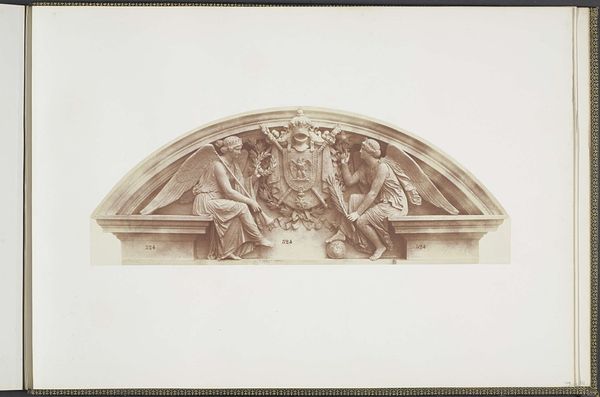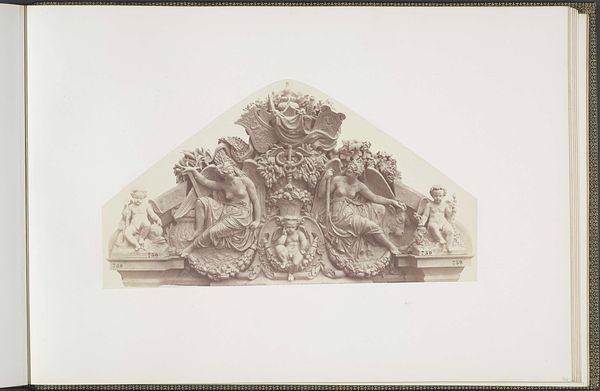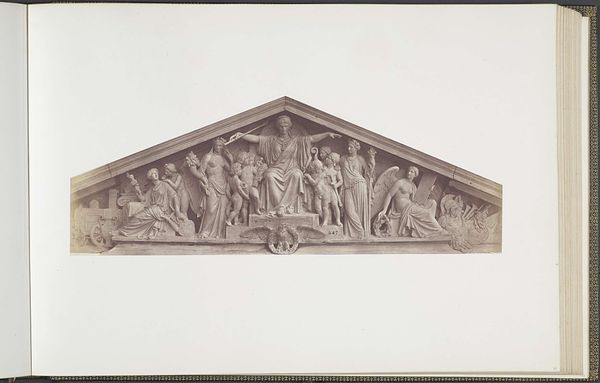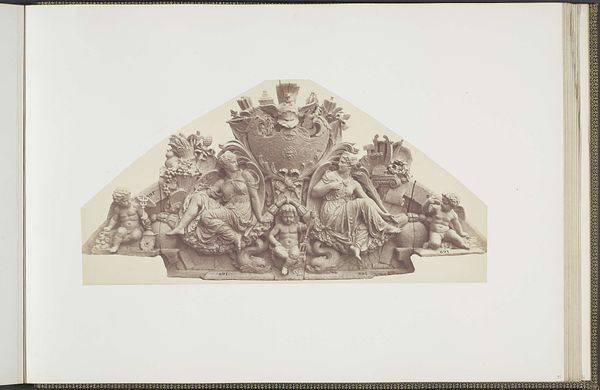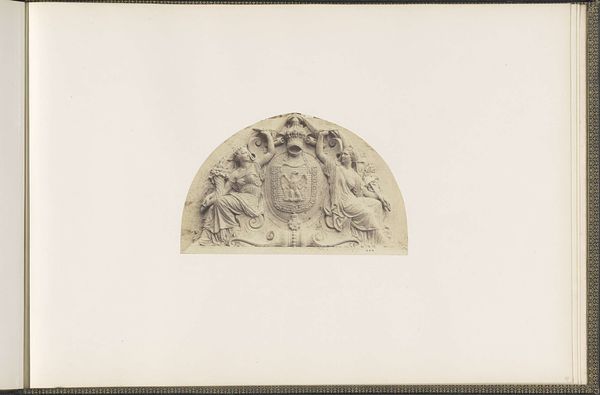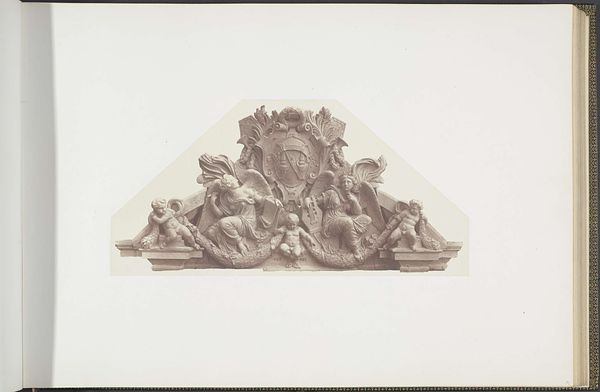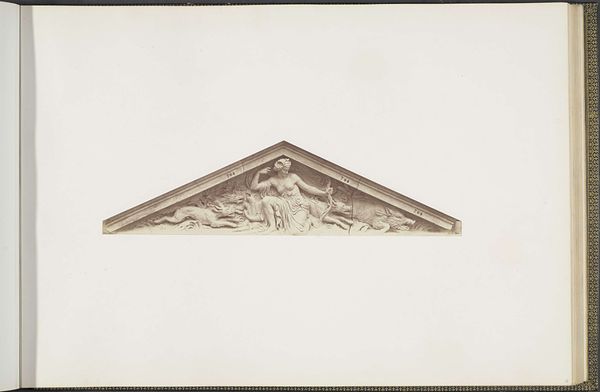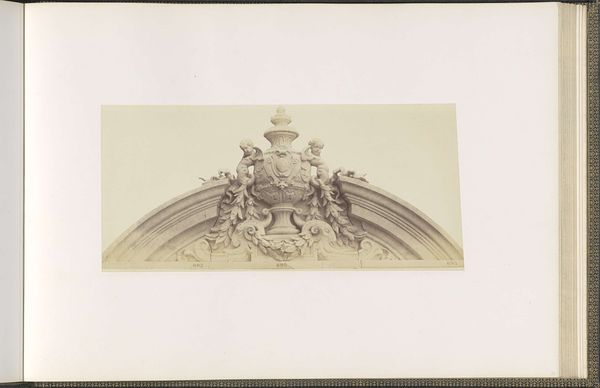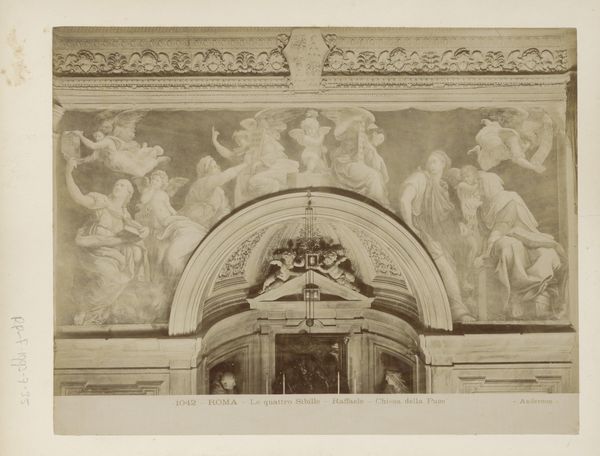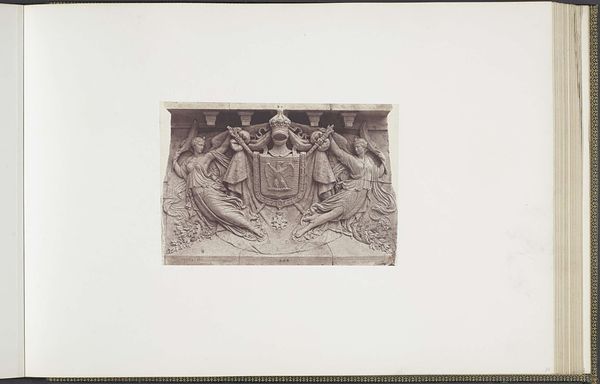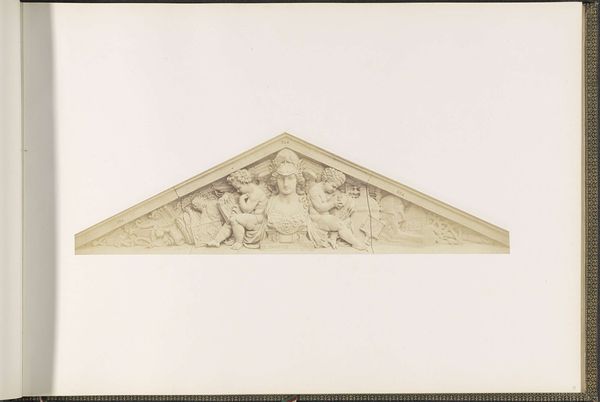
Gipsmodel voor het beeldhouwwerk "Le Travail intellectuel et le Travail manuel" door Georges Diébolt op het Palais du Louvre c. 1857
0:00
0:00
print, relief, photography, sculpture, gelatin-silver-print
#
neoclacissism
#
allegory
# print
#
relief
#
classical-realism
#
photography
#
sculpture
#
gelatin-silver-print
#
history-painting
Dimensions: height 378 mm, width 556 mm
Copyright: Rijks Museum: Open Domain
Curator: Editor: Here we have Edouard Baldus's photograph of Georges Diébolt's plaster model "Intellectual Work and Manual Work", made around 1857, held in the Rijksmuseum. I’m struck by how this photograph captures not just the sculpture itself, but the studio environment, making you consider its creation. What catches your eye? Curator: For me, the real interest lies in unpacking the context of labour suggested in the image. Look at the material of the sculpture itself – plaster, a readily available, relatively inexpensive material. And then consider the labour Baldus undertook to create this photograph, documenting Diébolt's work. What does it suggest about the relationship between art, labour, and the rise of photography? Editor: It's like a record of the means of production! Before photography, this documentation wouldn't exist. Is Baldus elevating or just recording? Curator: That's the key question! He is actively participating in shaping how the public understands this work. Notice the careful lighting, and framing? Baldus wasn't merely replicating reality. The print itself is an object, requiring its own industrial processes and specialized labour. Does this change how you see the sculpture itself? Editor: I guess so. It makes me wonder about the accessibility of art. Was photography making art accessible, or was it creating a different form of elitism? Curator: Exactly! Think about the consumption of images in that era and how photography redefined the art market. Consider also the relationship between intellectual and manual labor expressed in the sculpture itself. This representation becomes available only by additional forms of manual labour to create a gelatin-silver print from it. Is there perhaps a hierarchical structure still implicitly built in? Editor: That is an intriguing point! It completely shifted my perception. Seeing it as a conversation on labor rather than simply appreciating it as art. Thanks. Curator: Yes! And by examining the materials and processes involved, we gain a deeper understanding of both the artwork and its place in the social and economic landscape of the time.
Comments
No comments
Be the first to comment and join the conversation on the ultimate creative platform.
